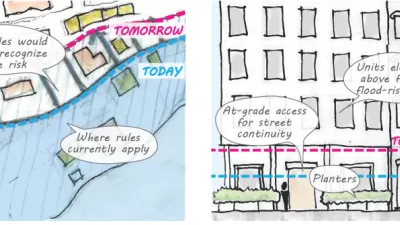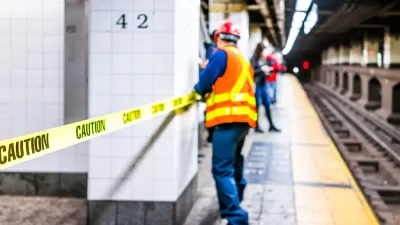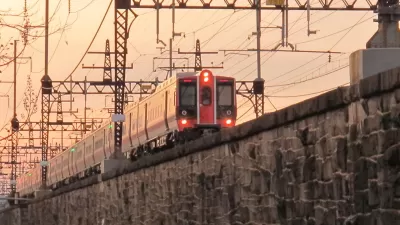Cassim Shepard and Varick Shute respond to an exhortation by Governor Cuomo to "build [the New York City area] back smarter" in the aftermath of Superstorm Sandy, and in the face of changing weather patterns, with some ideas on what that will entail.
There isn't one single solution to building a New York metropolitan area more able to withstand the "new reality" of rising seas and extreme weather incidents that threaten the city, argue Shepard and Shute, but rather a range of tactics across multiple scales that can make the area more responsive and resilient.
"The kind of coordination we have seen between federal, state, and local officials over the past few days points both to pathways and to pitfalls on the road towards multi-scalar collaboration. Financial, political, and practical collaboration will be vital to creating an infrastructure commensurate with the challenges ahead. The investments necessary won't come top-down from the federal government in our current political climate. Nor can we rely exclusively on the DIY, bottom-up efforts of community groups and individual citizens to build the infrastructure of the future."
"Both national leadership and community stewardship will be necessary, mediated by the policies, investments, and interventions of states and cities. To 'build it back smarter,' as Governor Cuomo has called for, will require a shift in understanding what infrastructure means, how it performs, and how – when it's well designed, resilient, and responsive – its public benefits extend outwards across multiple and nested scales of citizenship, from community, to state, to nation, to planet."
FULL STORY: From the Editors: Build It Back Smarter

Alabama: Trump Terminates Settlements for Black Communities Harmed By Raw Sewage
Trump deemed the landmark civil rights agreement “illegal DEI and environmental justice policy.”

Planetizen Federal Action Tracker
A weekly monitor of how Trump’s orders and actions are impacting planners and planning in America.

The 120 Year Old Tiny Home Villages That Sheltered San Francisco’s Earthquake Refugees
More than a century ago, San Francisco mobilized to house thousands of residents displaced by the 1906 earthquake. Could their strategy offer a model for the present?

USDOT Repeals Emissions Monitoring Rule
A Biden-era regulation required states to report and plan to reduce transportation-related emissions.

CaBi Breaks Ridership Record — Again
Washington D.C.’s bike share system is extremely popular with both residents and visitors.

San Francisco Opens Park on Former Great Highway
The Sunset Dunes park’s grand opening attracted both fans and detractors.
Urban Design for Planners 1: Software Tools
This six-course series explores essential urban design concepts using open source software and equips planners with the tools they need to participate fully in the urban design process.
Planning for Universal Design
Learn the tools for implementing Universal Design in planning regulations.
Clanton & Associates, Inc.
Jessamine County Fiscal Court
Institute for Housing and Urban Development Studies (IHS)
City of Grandview
Harvard GSD Executive Education
Toledo-Lucas County Plan Commissions
Salt Lake City
NYU Wagner Graduate School of Public Service





























